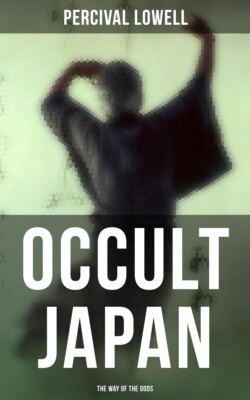Читать книгу Occult Japan: The Way of the Gods - Percival Lowell - Страница 11
IV.
ОглавлениеBefore entering upon the miracles, it is necessary to explain the present position of Shintō with regard to these esoteric practices generally. For, though as we shall see when we look later into their history, it is probable that originally they were the common property of all Shintōists, they are not so to-day.
Of the present ten sects that compose the Shintō church, only two practice the possession-cult, the Shinshiu and the Mitaké sects. That they do so while the others do not is not matter of creed, but of tradition. Though called sects, the Shintō sects are not properly so much sects as sections. For they differ not by differently worshiping an identical god, but by identically worshiping different gods. Each of them likewise worships, though with less assiduity, all the others' gods. Each looks specially to the great shrine dedicated to its special gods; and all but two, one of which is a sort of general bureau of church organism, make pilgrimages to their shrine once or twice a year.
These sects date only from since the time of the revival of pure Shintō twenty years ago. But under another name the professors of the cult hold it in unbroken practice from the far past. Whether during the time of Shintō's long eclipse the possession cult was kept up by the few remaining pure Shintōists, if indeed there can be said to have been any pure Shintōists then at all, is doubtful, although the priests to-day assert that it was always practiced by the pious in secret. Certain it is, however, that during the lapse of Shintō from national regard practice of the cult passed to all intents and purposes to a hybrid of Shintō and Buddhism known as Ryōbu or Both, because it was indeed manufactured of both creeds.
The great Kōbō Daishi is the reputed father of Ryōbu. This worthy soul—who by the way was never called Kōbō Daishi while he was called anything; he was known as Kūkai so long as he was known at all—was the founder of the Shingon sect of Buddhism in Japan. He seems to have been singularly energetic. The peaks he climbed, the pictures he painted, and the divers deeds of one sort and another which he accomplished, would have kept Methuselah on the jump for the whole of his millennial life. Nevertheless, he found time amid it all to invent Ryōbu. His invention consisted in a judicious hodge-podge of Shintō and Buddhist popularities. His diligence met its reward. The newly invented faith instantly became very popular, because it let everybody in. It was essentially an open air faith, much given to mountaineering, a trait it might be supposed to have inherited from its father, were it not instinctive in a Japanese to climb.
Ryōbu has more than one sect, but it was only the Ontaké sect of the belief that practiced god-possession. It kept the cult alive for a thousand years, and then, when pure Shintō was revived at the time of the Restoration, and hybrids were abolished by imperial edict, the Ontaké Ryōbuists came back again into the Shintō fold.
Besides Ryōbu, some of the Buddhist sects early saw the advantage of being intimate with deity, and Kōbō Daishi, after being taught the means to it by the Shintō Emperor Sanga, so it is said, not satisfied with inventing Ryobu and incorporating it in that, boldly took it for his own Shingon sect of Buddhism. And the Shingon sect still practices the cult to-day. Denkyō Daishi, the founder of the Tendai sect, was likewise captivated by it and incorporated it into his belief. Lastly, the Nichiren sect learned the art and indulges in it now more than either of the other two.
We thus find at the present time among the professors of the cult some Shintōists, some Ryōbuists, and some Buddhists; each faith claiming it stoutly for its own.
